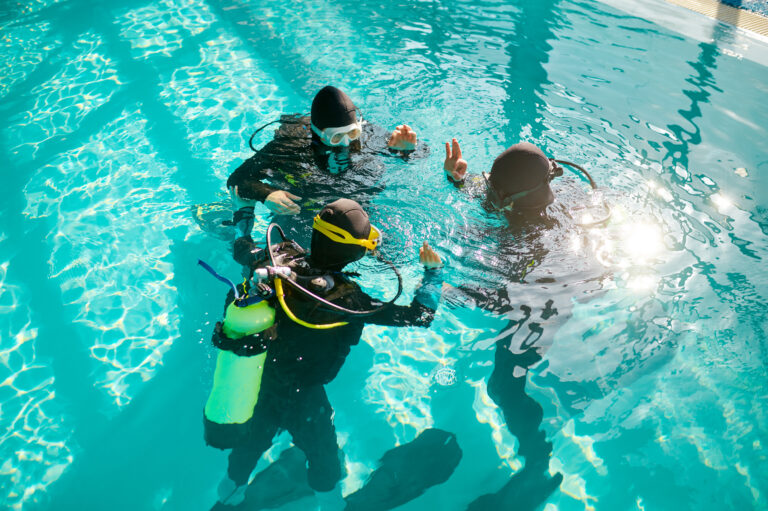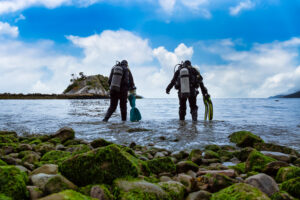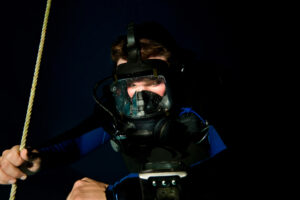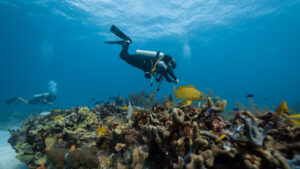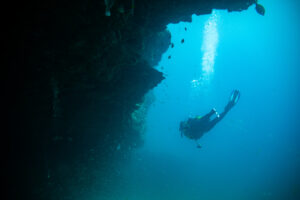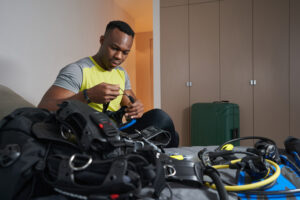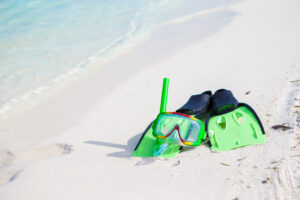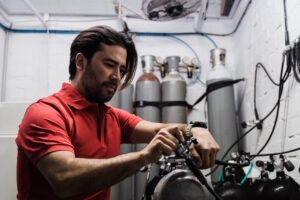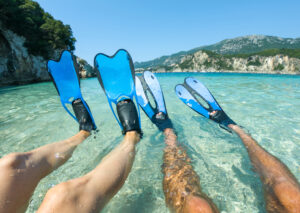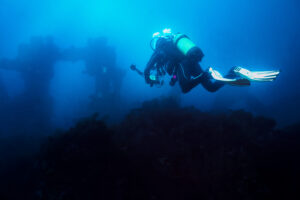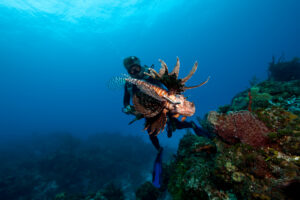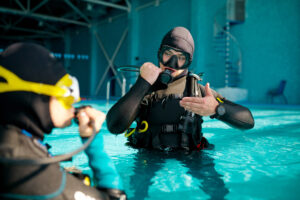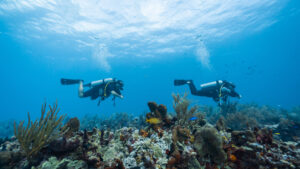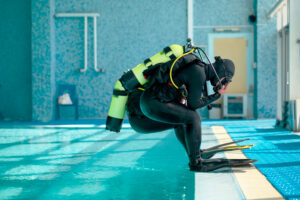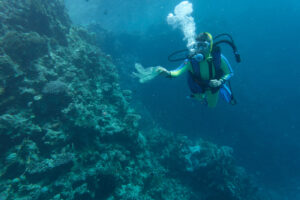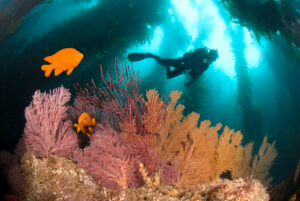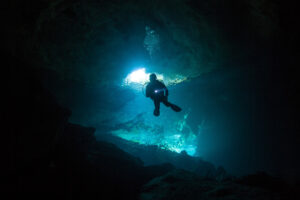What is a Confined Water Dive?
A confined water dive is a type of scuba diving activity that takes place in a pool or other shallow, current-free underwater environment. Confined water dives play a crucial role in the learning process, as they serve as an intermediate step between classroom instruction and open water dives. The primary purpose of confined water dives is to provide a safe and controlled setting for students to practice and master essential scuba diving skills before progressing to open-water check-out dives.
Confined Water Dive Environment
The ideal environment for a confined water dive is a swimming pool or a shallow, protected body of water with limited or no current. These controlled environments allow students to focus on mastering specific diving skills without the added challenges and potential hazards of open water conditions.
Training and Skills Development
Confined water dives are an integral part of the scuba diving certification process. Students are introduced to various aspects of scuba diving, such as equipment setup, buoyancy control, underwater communication, and emergency procedures. The following are some essential skills taught and practiced during confined water dives:
Equipment Familiarization
In the realm of scuba diving education, one of the fundamental aspects involves the familiarization of various diving equipment. This segment primarily focuses on enabling students to competently assemble, disassemble, and maintain their scuba gear. Key components include the buoyancy control device (BCD), regulator, and cylinder, each with distinct purposes. The BCD is a jacket that divers wear to control their depth underwater, while the regulator is a pressure-regulating device that allows divers to breathe under extreme pressures. The cylinder, or scuba tank, carries the divers’ air supply. By acquiring proficiency in handling these components, students learn to ensure their gear’s reliability, thereby enhancing their safety and efficiency under water.
Pre-dive Safety Check
The pre-dive safety check is a crucial procedure that students are taught to carry out diligently before every dive. This systematic review aims to ensure that all equipment is functioning optimally and that the diver is adequately prepared for the underwater expedition. It includes checking the BCD for proper inflation and deflation, ensuring the regulator delivers air correctly, and verifying the tank valve is fully open. Other important checks are on weight systems, releases, and final okay. This ritualistic process not only reinforces safety measures but also helps in building confidence and promoting self-sufficiency among divers.
Buoyancy Control
Buoyancy control is another essential skill that scuba diving students practice meticulously. This aspect involves achieving and maintaining neutral buoyancy, a state where divers neither sink nor float, enabling them to hover effortlessly underwater. This is accomplished by carefully inflating and deflating the BCD, which adjusts the diver’s volume and, consequently, their buoyancy. Mastering this technique is crucial as it affects air consumption, conservation of the underwater environment, and overall diver comfort and safety.
Mask Clearing
The ability to clear water from one’s mask while submerged is an invaluable skill that all scuba diving students must acquire. This technique is taught to prevent panic and disorientation during a dive should the mask get flooded with water. It involves exhaling from the nose while slightly tilting the head back and gently lifting the mask’s lower edge, allowing the water to escape. By mastering mask clearing, divers can maintain their calm and focus, ensuring an enjoyable and safe diving experience.
Regulator Recovery
Regulator recovery training is an essential component of a diver’s education. This practice ensures that if a regulator—the device that allows divers to breathe from their scuba tanks—becomes dislodged from a diver’s mouth, they can retrieve it promptly and continue to breathe safely. Various techniques, including the sweep method and reach method, are taught to facilitate quick and efficient recovery. In essence, regulator recovery training equips divers with the skills and confidence to handle unexpected situations, ensuring their safety and the continuation of their underwater journey.
Alternate Air Source Use
The utilization of an alternate air source is a crucial part of scuba diving, particularly in emergency situations. Students learning to scuba dive are taught the importance of being able to share air with their dive buddy using an alternate air source. This is often a device known as an ‘octopus’, or a secondary regulator, which is connected to the diver’s primary air supply. Understanding its operation and mastering its use is a vital skill. This not only ensures the individual’s safety but also reinforces the spirit of teamwork and mutual reliance that is inherent in the sport of scuba diving.
Underwater Communication
Effective communication is key in many aspects of life, and underwater exploration is no exception. Due to the inherent constraints of the underwater environment, verbal communication is not possible. Thus, students are taught a variety of essential hand signals and other non-verbal methods to communicate with their dive buddy and instructor while submerged. These signals cover a wide range of messages, from basic needs such as ‘I need to ascend’ to emergency notifications such as ‘I am out of air’. Mastery of these signals ensures clear communication, which can dramatically increase the safety and enjoyment of the dive.
Emergency Procedures
The unexpected can always occur, even in the relatively controlled environment of a scuba dive. Students are, therefore, introduced to a range of potential emergency scenarios, such as running out of air or encountering an unresponsive diver. They are taught to remain calm under pressure and to deploy the appropriate response techniques. These include sharing air, towing a tired or unconscious diver, and making controlled ascents. By simulating these scenarios in a controlled environment, students are better prepared to respond effectively should they ever face such a situation in the open water.
Controlled Emergency Swimming Ascent (CESA)
Controlled Emergency Swimming Ascent (CESA) is an essential skill taught to scuba diving students. In the event of an equipment failure or another significant issue that would necessitate an immediate return to the surface, students must be capable of making a controlled ascent while continuously exhaling to prevent lung over-expansion injuries. The exhalation is often characterized by the ‘ahhh’ sound that should be audible to the diver throughout the ascent. This technique helps to prevent the risk of pulmonary barotrauma, a potential danger in rapid ascents without proper exhalation.
Underwater Navigation
Navigating underwater is a skill that is both challenging and rewarding to master. While basic navigation skills are typically honed during open water dives, confined water dives offer students an opportunity to familiarize themselves with more advanced tools and techniques. This often includes the use of compasses and other navigational aids. These tools, along with natural navigation techniques such as recognizing landmarks or observing aquatic life patterns, can help divers maintain their bearings, explore more confidently, and return safely to their starting point.
Advantages of Confined Water Dives
Confined water dives offer several benefits, both for novice divers and experienced divers seeking to improve their skills or learn new techniques. Some of these advantages include:
Safety
In the realm of diving, safety is of paramount importance. Diving in a controlled environment, such as in confined water, significantly reduces the potential hazards linked with open water dives. This controlled setting allows students to concentrate primarily on mastering the requisite skills, free from the distractions and unpredictable variables that open water diving often presents. Such environments might include swimming pools or sheltered, shallow parts of open water bodies. In these controlled spaces, conditions like visibility, current, and marine life can be managed, thus eliminating possible risks and ensuring that the student diver’s primary focus remains on learning and perfecting their diving techniques.
Instructor Supervision
One of the key advantages of confined water diving in a diving instruction context is the opportunity it provides for intensive instructor supervision. The nature of confined water dives fosters an ideal learning environment where instructors can provide immediate, personalized feedback and guidance. This allows them to ensure that students fully understand the principles behind each skill, and are capable of executing them proficiently before progressing to the next level. Such a setup significantly enhances the quality of instruction, as instructors can closely monitor each student’s performance, identify areas of improvement, and tailor their teaching methods to meet individual learning needs.
Skill Reinforcement
Confined water dives play an essential role in skill reinforcement, a fundamental aspect of learning any physical activity, and diving is no exception. The importance of repetition in building muscle memory and enhancing confidence cannot be overstated. Confined water dives offer the perfect environment for repetitive practice, as they allow students to perform the same skills multiple times in a safe, controlled setting. This regular, consistent practice aids in cementing the skills into the students’ muscle memory, making them second nature. Over time, this leads to increased confidence in the students’ abilities, preparing them for the more complex scenarios they may encounter in open water dives.
Customized Training
Customized training is an integral part of the educational process in scuba diving, particularly in the context of confined water dives. With an adept instructor at the helm, confined water dive sessions can be adjusted and tailored to specifically address individual students’ unique needs, strengths, and areas of improvement. This level of customization allows for a more comprehensive and personally relevant learning experience. By identifying students’ specific skill levels and learning styles, instructors can modify the course curriculum to better suit each participant, facilitating mastery of fundamental diving techniques and safety protocols. Such personalized training approach ensures that each student not only learns at their own pace but also gains a solid foundation of essential diving skills.
Accessibility
Confined water dives offer high levels of accessibility, a factor that is crucial in facilitating a more convenient and hassle-free learning experience for students. These dives typically take place in easily accessible locations such as local swimming pools or calm, shallow bodies of water. This availability of suitable and convenient locations means that students who may have limited time or resources are still able to participate in training sessions with relative ease. The proximity and accessibility of these training locations can significantly reduce travel time and associated costs, thereby encouraging more people to engage in scuba diving education and fostering a greater level of inclusivity within the sport.
Environmental Awareness
Confined water dives play a pivotal role in promoting environmental awareness among novice divers. They provide students with a controlled environment to become more comfortable and aware of their surroundings underwater. This initial familiarization with underwater environments is crucial in helping students to build confidence and develop a sense of spatial orientation. Such skills are invaluable when later transitioning to open water dives where conditions can be more unpredictable. By instilling a sense of environmental awareness early on, instructors can ensure that students are better equipped to make informed decisions and demonstrate improved situational awareness in diverse diving environments. This not only enhances their diving experience but also promotes responsible behavior towards underwater ecosystems.
Skill Refresher
Confined water dives are not only beneficial for novice divers but also serve as an excellent refresher for more experienced divers. These controlled environments provide the perfect setting for veterans to revisit and refine their diving skills, review critical safety procedures, or practice new techniques. By engaging in confined water dives, experienced divers can ensure their skills remain sharp and up-to-date. This is particularly important for those who wish to maintain a high level of competency or are planning to take on more challenging dives. By practicing in a controlled environment, they can apply their refreshed skills in open water situations with increased confidence and precision, enhancing their overall diving performance and safety.
Transition to Open Water Dives
After completing the confined water dive portion of their training, students progress to open water dives, where they apply the skills they have learned in a real-world diving environment. Open water dives typically take place in larger bodies of water, such as oceans, lakes, or quarries, and may involve varying conditions, depths, and underwater topographies.
During open water dives, students must demonstrate their proficiency in the skills they learned during confined water dives, including buoyancy control, regulator recovery, alternate air source use, underwater communication, emergency procedures, and navigation. Successful completion of these dives is required to obtain scuba diving certification from recognized organizations, such as PADI, SSI, or NAUI.
Confined water dives serve as a vital stepping stone for scuba divers in training, allowing them to practice and perfect their skills in a controlled and safe environment. By participating in confined water dives, students build confidence, competence, and a strong foundation that prepares them for the challenges and rewards of open water diving.

